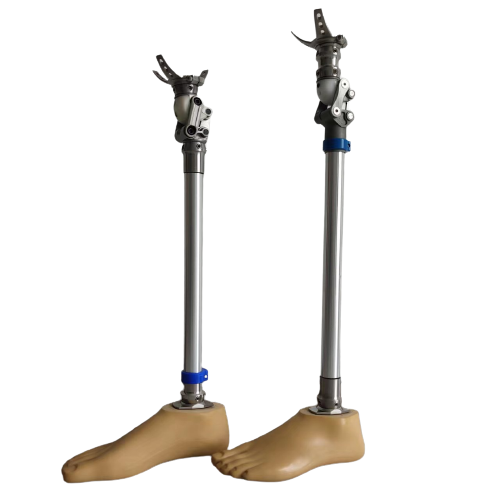The Comprehensive Guide to Prosthetic Orthosis: Enhancing Mobility and Quality of Life
Release Time:
Aug 10,2025
Prosthetic orthosis refers to specialized devices designed to support, align, or improve the function of limbs and body parts that may be weakened or impaired due to injury, congenital conditions, or surgeries. These devices play a significant role in rehabilitation and mobility enhancement for individuals affected by various medical conditions. Understanding the different types, functionalities,
Prosthetic orthosis refers to specialized devices designed to support, align, or improve the function of limbs and body parts that may be weakened or impaired due to injury, congenital conditions, or surgeries. These devices play a significant role in rehabilitation and mobility enhancement for individuals affected by various medical conditions. Understanding the different types, functionalities, and benefits of prosthetic orthosis can greatly aid in the recovery and quality of life for those who need them.
There are a variety of prosthetic orthotic devices tailored to meet specific needs. Common types include lower limb orthoses, such as knee-ankle-foot orthoses (KAFOs) and ankle-foot orthoses (AFOs), which are designed to provide support during walking and standing. Upper limb orthoses can support the arm, hand, or shoulder, helping individuals regain function and strength after an injury or surgery. Each type is engineered to accommodate various conditions, enabling a personalized approach to treatment.
The primary function of a prosthetic orthosis is to enhance mobility. For instance, individuals suffering from muscle weakness or spasticity can benefit from these devices, as they assist in stabilizing joints and improving gait. By providing support and reducing the risk of falls, prosthetic orthosis can encourage patients to engage in physical activities, which is crucial for overall well-being.
Moreover, the psychological and social aspects of using prosthetic orthosis should not be overlooked. Many users report an increase in confidence and independence as a direct result of having access to these devices. By improving physical capabilities, prosthetic orthosis can lead to enhanced participation in daily activities, hobbies, and social interactions, significantly contributing to a better quality of life.
When considering a prosthetic orthosis, it is important for users to consult with healthcare professionals, such as orthopedic specialists and physical therapists. These experts can assess individual needs, recommend suitable types of orthoses, and provide guidance on proper usage and care. Custom fittings are often necessary to ensure optimal comfort and functionality, which can also enhance user experience and satisfaction.
In conclusion, prosthetic orthosis plays a vital role in the rehabilitation process for individuals with limb deficiencies. By enhancing mobility, improving physical function, and boosting confidence, these medical devices can significantly transform lives. Understanding the various types of prosthetic orthoses and their benefits is essential for anyone considering this option, paving the way for informed decisions and improved health outcomes.
There are a variety of prosthetic orthotic devices tailored to meet specific needs. Common types include lower limb orthoses, such as knee-ankle-foot orthoses (KAFOs) and ankle-foot orthoses (AFOs), which are designed to provide support during walking and standing. Upper limb orthoses can support the arm, hand, or shoulder, helping individuals regain function and strength after an injury or surgery. Each type is engineered to accommodate various conditions, enabling a personalized approach to treatment.
The primary function of a prosthetic orthosis is to enhance mobility. For instance, individuals suffering from muscle weakness or spasticity can benefit from these devices, as they assist in stabilizing joints and improving gait. By providing support and reducing the risk of falls, prosthetic orthosis can encourage patients to engage in physical activities, which is crucial for overall well-being.
Moreover, the psychological and social aspects of using prosthetic orthosis should not be overlooked. Many users report an increase in confidence and independence as a direct result of having access to these devices. By improving physical capabilities, prosthetic orthosis can lead to enhanced participation in daily activities, hobbies, and social interactions, significantly contributing to a better quality of life.
When considering a prosthetic orthosis, it is important for users to consult with healthcare professionals, such as orthopedic specialists and physical therapists. These experts can assess individual needs, recommend suitable types of orthoses, and provide guidance on proper usage and care. Custom fittings are often necessary to ensure optimal comfort and functionality, which can also enhance user experience and satisfaction.
In conclusion, prosthetic orthosis plays a vital role in the rehabilitation process for individuals with limb deficiencies. By enhancing mobility, improving physical function, and boosting confidence, these medical devices can significantly transform lives. Understanding the various types of prosthetic orthoses and their benefits is essential for anyone considering this option, paving the way for informed decisions and improved health outcomes.
Keywords:
You Can Also Learn More About Industry Trends





